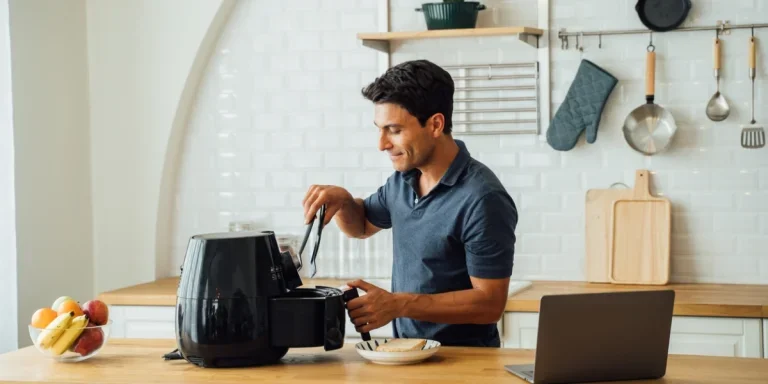Air fryers are everywhere, and there’s a good reason consumers love them. They deliver a crispy, golden texture without the massive amounts of oil (and guilt) that usually come with deep-frying. While that’s great for consumers, this surge in popularity (up to 612,000 searches monthly in the first half of 2025) is also a clear opportunity for retailers.
However, this popularity also means many options currently exist on the market. So, retailers must consider different factors to stand out in this market. This article will discuss what customers often look for when searching for an air fryer and how retailers can use this to their advantage.
Table of Contents
The benefits that make consumers love air fryers
1. Healthier cooking
2. Versatility
3. Convenience and speed
Key factors consumers consider when buying air fryers
1. Cooking capacity
2. Power and wattage
3. Temperature range and control
4. Cooking functions and presets
5. Ease of use and cleaning
6. Safety features
7. Design and aesthetics
8. Accessories and add-ons
9. Noise level
Best practices for retailers when showcasing air fryers
1. Host live or video demos
2. Easy comparisons
3. Inspire with recipes
4. Bundle accessories
Rounding up
The benefits that make consumers love air fryers
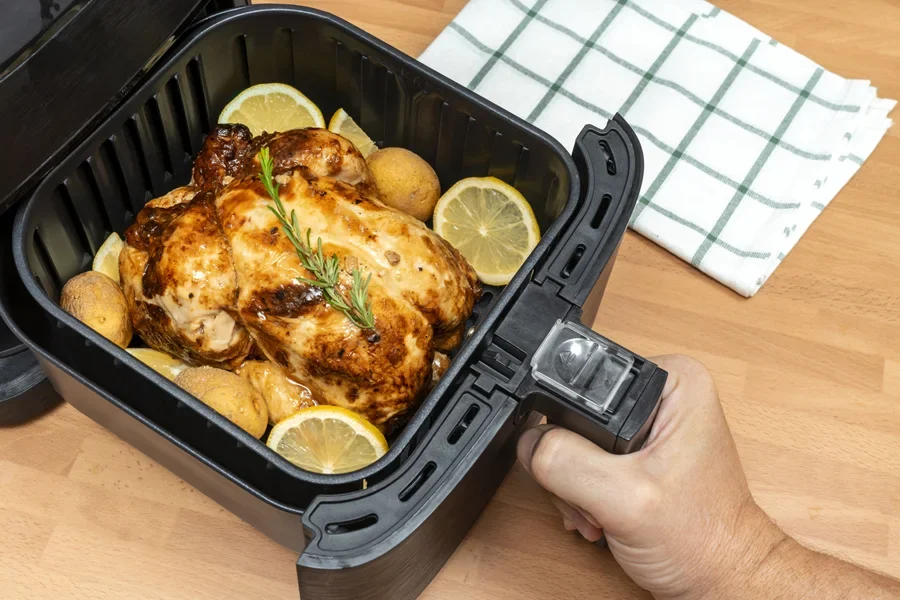
1. Healthier cooking
The biggest draw for most shoppers is that air fryers use hot air circulation to cook food with minimal oil. This approach is much lighter, meaning fewer calories and less fat, which appeals to anyone trying to watch their waistline or eat healthier.
2. Versatility
Although people call it “air fry,” modern models often do more than that. Many can bake, roast, grill, and even dehydrate. That’s a selling point for customers who value multifunctional appliances that can replace multiple bulky gadgets on the countertop.
3. Convenience and speed
Time is precious, and today’s customers want a fast solution that gets dinner on the table. Air fryers typically cook food quicker than traditional ovens because they circulate heat around all sides. They’re also straightforward to operate, as many models come with preset programs to make cooking nearly foolproof.
Key factors consumers consider when buying air fryers
1. Cooking capacity
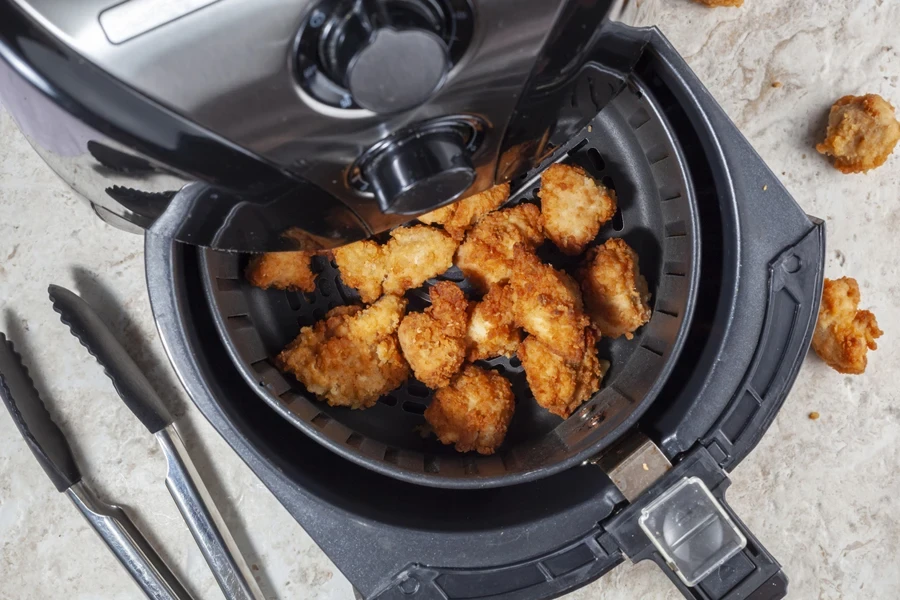
People often ask, “Will it be big enough for what I want?” or “Will it fit in my tiny kitchen?” A large-capacity air fryer (7 to 8 quarts, with some going over 20 quarts) is ideal for families that regularly cook in batches or entertain guests. Singles or couples with limited space might prefer a smaller, more compact unit (1-3 quarts).
2. Power and wattage
If consumers are all about efficiency and speed, wattage is one of the first things they’ll look at. Usually, air fryers range from 800 to 1800 watts, though most models use around 1500 watts. While models with higher wattage can heat up quickly and cook faster, they may consume much power. So, unless consumers don’t care about power usage or the limitations of their outlets, they’ll need clear information about how much the air fryer will potentially consume.
3. Temperature range and control
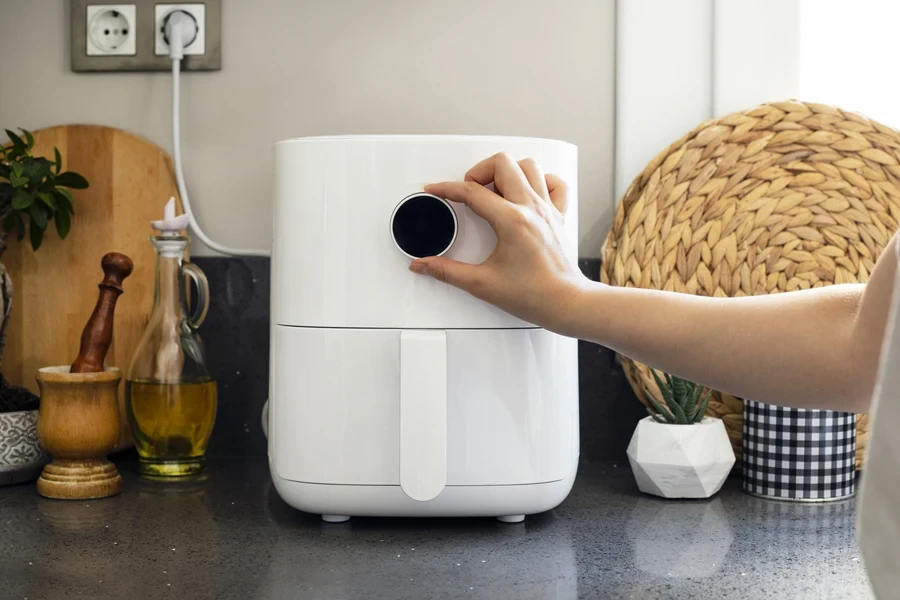
Not every recipe needs the same temperature, so consider stocking air fryers with a good temperature. Most options fall between 200°F and 400°F, while others can go as low as 105oF for dehydrating or fermenting. However, air fryers should never go beyond 450°F to keep PTFE from breaking down on the food. Consumers will also need a convenient way to adjust this temperature. While some love and want precise digital controls, others are fine with a simple knob
4. Cooking functions and presets
As mentioned earlier, many air fryers do more than their core function. They can also come with preset baking, roasting, grilling, or dehydrating modes. But that’s not all. Some models may also offer pre-programmed settings for popular foods, like cake, fries, and chicken. Consumers love these “one-touch” settings that take the guesswork out of cooking—so the more presets and cooking functions, the higher the chances of convincing them to buy.
5. Ease of use and cleaning

Air fryers are great, but they will easily put consumers off if they aren’t simple to use and clean. How complicated will it be to set up and start cooking? And how much scrubbing will consumers have to do afterward?
The perfect solution is to stock air fryers with user-friendly buttons (or a touch-activated display) and easy-to-read displays. For ease of cleaning, look for air fryers with non-stick coatings that consumers can wipe easily. Also, consider models with removable parts like the tray and cooking basket, which are easy to clean and remove.
6. Safety features
Safety concerns matter with any appliance involving high heat, and air fryers are no exception. The best air fryers should have automatic shut-off features, cool-touch handles, and non-slip feet—they can help prevent accidents and ease customer worries.
7. Design and aesthetics
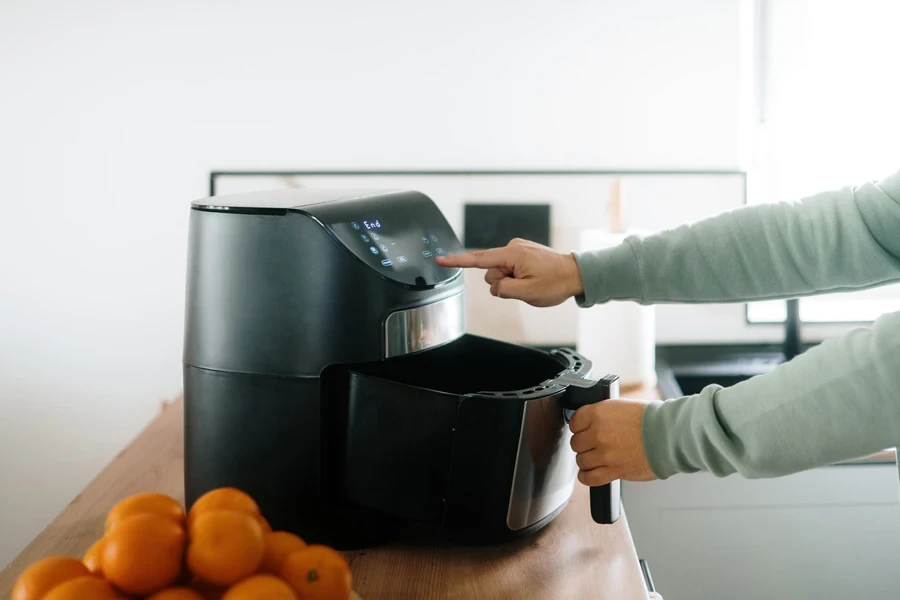
Today, many consider kitchen appliances part of their décor, meaning they’ll pay attention to design and aesthetics. If the targets are style-conscious buyers, sleek, modern designs or trendy colors might catch their eye. Businesses should also consider stocking air fryers in multiple finishes (like stainless steel, matte black, or fun pops of color), which can help them appeal to various tastes.
8. Accessories and add-ons
Who doesn’t love a bunch of additional items and accessories? While many consumers would rather get air fryers alone, others will love add-ons like extra racks for cooking multiple items at once, removable dividers for separating different foods, and bonus recipe booklets. These small extras can make air fryers more versatile and user-friendly—and they’re also a great opportunity for retailers to upsell.
9. Noise level
Air fryers have fans to make some noise—the question is how loud it should be. Ideally, air fryers should generate noise at around 60 to 65 decibels, like a quiet conversation in a restaurant. Nevertheless, always tell consumers if the stocked model is noisier or quieter.
Best practices for retailers when showcasing air fryers
1. Host live or video demos
There’s nothing more convincing than seeing a product in action. Retailers should consider organizing a demo station or producing short online videos that show how fast and easy it is to whip up something delicious.
2. Easy comparisons
Offer side-by-side charts in-store or on product listings to help shoppers see capacity, wattage, features, and price differences at a glance. Remember that these charts should be simple and clear enough for anyone to read and understand.
3. Inspire with recipes
Another great idea to help sell more air fryers is sharing recipes in a small printed booklet or website. This strategy adds value for the buyer and demonstrates what they can do with their new gadget.
4. Bundle accessories
Bundling is a perfect way to boost the perceived value of a purchase. So, offering accessories like special baking trays, silicone liners, or an extra rack can encourage customers to upgrade to a more complete package.
Rounding up
Air fryers continue to captivate consumers looking for healthier, faster, and more convenient cooking methods. When someone shops for an air fryer, they’re looking for an appliance that saves time, keeps calories down, and fits seamlessly into their kitchen routine. Understanding capacity, wattage, temperature control, safety, and more will help retailers tailor their inventory and marketing to match what consumers are looking for.
